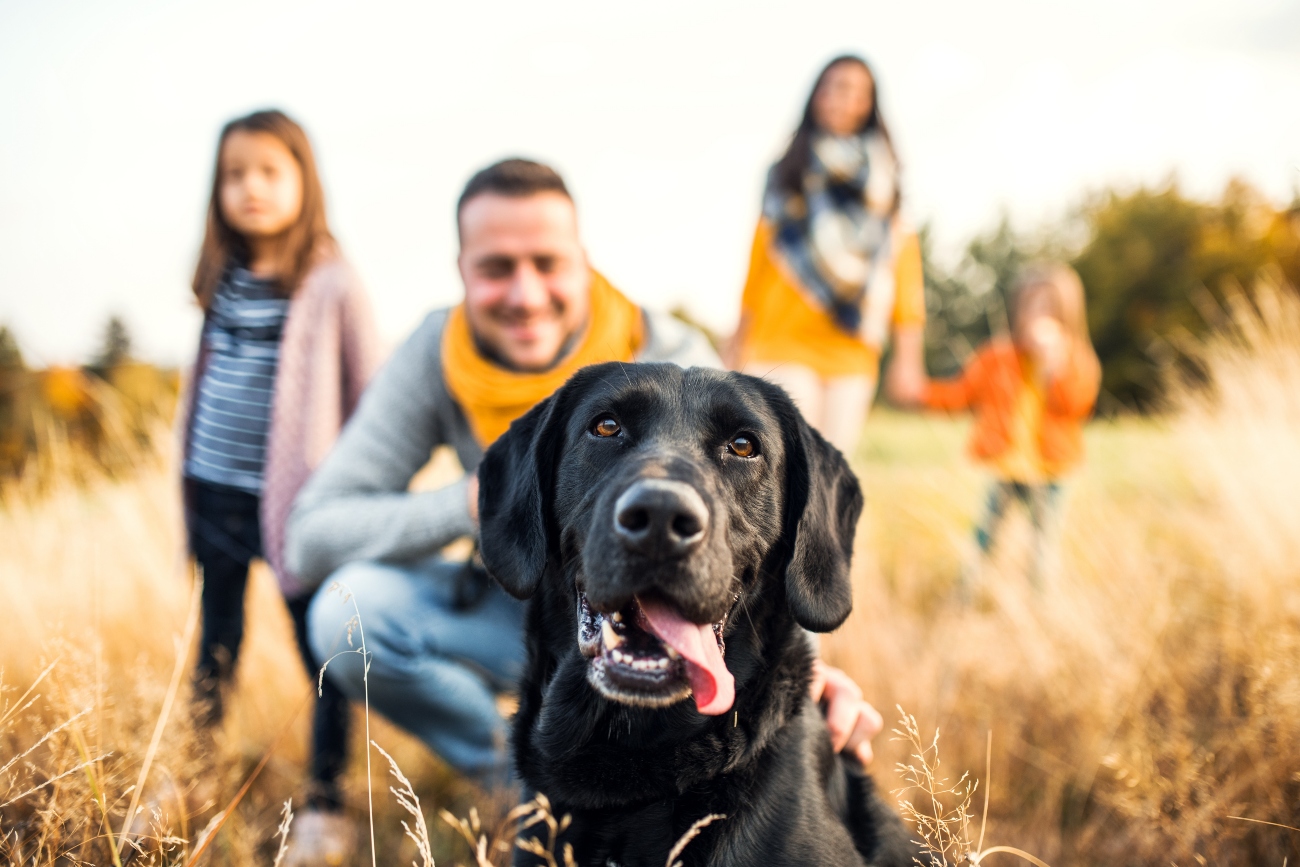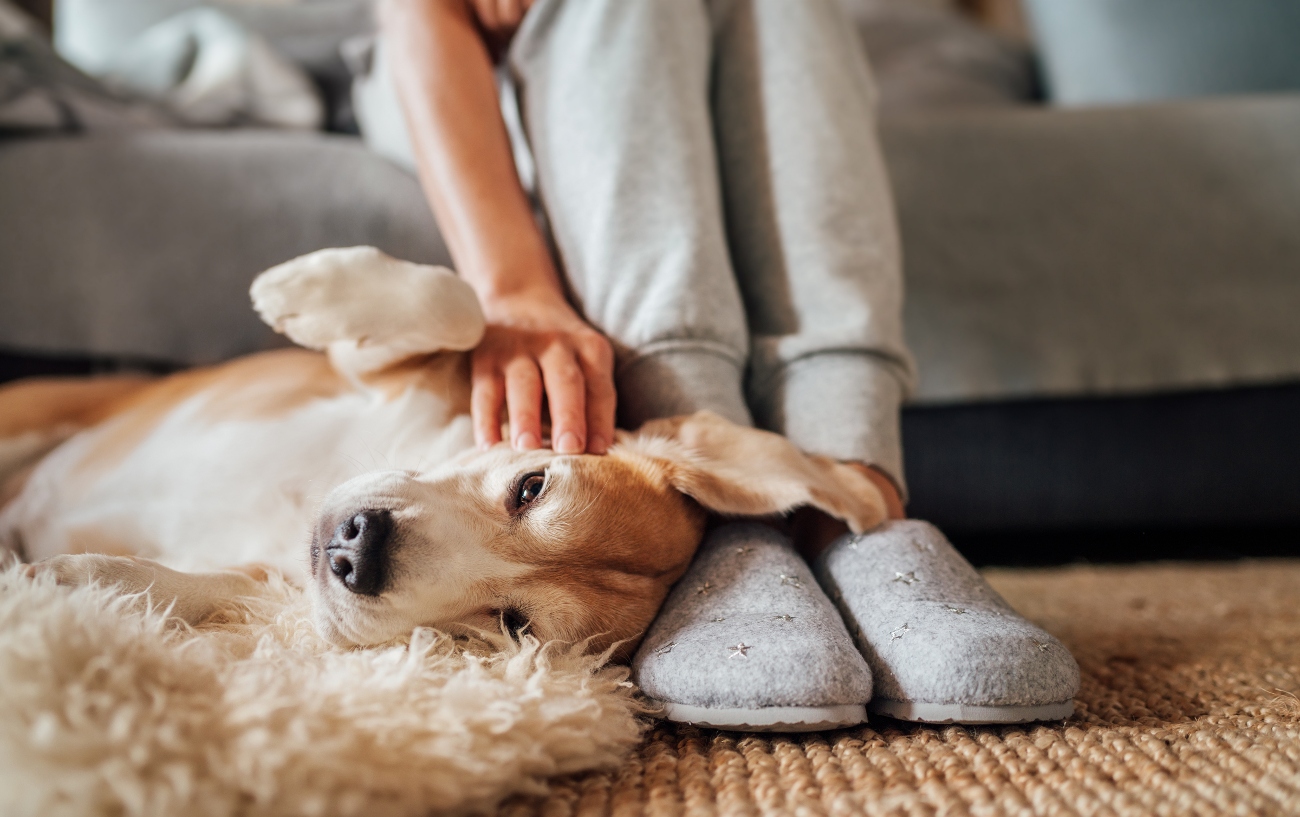
Why does my older dog keep falling?
30th May, 2023
Are you worried about your senior dog's sudden and unexplained falls? Do you find yourself asking, "Why is my dog randomly falling over?". If so, you're not alone.
In this comprehensive guide, we'll explore the possible reasons for these incidents, help you recognise the signs, and provide tips on preventing falls and supporting your dog's recovery.
Age-related issues that may cause falling in older dogs
As many dogs age, they become more susceptible to a variety of health issues that can affect their balance, mobility, and overall quality of life. These age-related issues can lead to your older dog falling more often than you'd expect.
- Joint and muscle problems: Falling in senior dogs tends to be attributed to joint and muscle issues, such as arthritis or muscle atrophy. These conditions can cause pain, stiffness, and weakness, making it difficult for your dog to move and maintain their balance.
- Vision and hearing loss: Their decline in their vision and hearing may cause sensory loss. This can make it challenging for your dog to navigate their surroundings, leading to falls and accidents.
- Cognitive decline: Cognitive decline can result in disorientation, confusion, and poor decision-making, which may contribute to their inability to maintain their balance and avoid falls.
Medical issues that may lead to a dog falling randomly
Apart from age-related issues, various medical conditions can also cause your dog to fall randomly such as:
Ataxia
This is when a dog experiences a loss of coordination in their head, limbs, or rear end due to a sensory dysfunction. This condition can be classified into three types: sensory, vestibular and cerebellar ataxia.
Cerebellar ataxia happens when the cerebellum in a dog's brain is damaged. Sensory ataxia, also known as proprioceptive ataxia, is caused by a compressed spinal cord due to brain tumours or bulging intervertebral disk. Vestibular ataxia, on the other hand, is caused by an issue in the brainstem or an inner ear infection.
Vestibular disease
This condition affects your dog's vestibular system which influences their sense of balance and can cause sudden, uncoordinated movements, leading to falls.
Intervertebral disc disease (IVDD)
IVDD is a condition that affects the spinal cord and can cause pain, weakness, and even paralysis in dogs. If your dog is experiencing IVDD, they may fall due to their inability to support their body weight or control their movements. A common sign of IVDD is that their hind legs may collapse more frequently.
Seizures
Seizures can cause sudden, involuntary muscle contractions, which can lead to your dog losing balance. If your dog is experiencing seizures, it's crucial to consult with your veterinarian to determine the cause and develop an appropriate treatment plan.
How do I know if my senior dog is suffering?
So, how do you know if your senior dog is suffering? Pay attention to their behaviour and look out for any changes in their routine. If your dog seems to be losing interest in activities they once enjoyed or seems less playful, it could be a sign of discomfort.
Remember, your dog can't tell you when they're in pain, so it's up to you to be vigilant and proactive in ensuring their well-being.
Recognising the signs

Here are some other symptoms that your dog may be struggling with balance or mobility issues:
- Difficulty standing up or lying down
- Reluctance to climb stairs or jump onto furniture
- Limping or favouring one leg over the other
- Head tremors, head tilt or abnormal eye movements
- Disorientation or confusion
If you notice any of these signs, consult with your vet immediately to determine the cause and discuss appropriate treatment options.
Minimising the risk of falls in older dogs
Here are some steps you can take to help your older dog stay safe and mobile:
- Provide a balanced diet and maintain a healthy weight to reduce stress on your dog's joints and muscles
- Keep your dog physically active with regular, low-impact exercises, such as walking or swimming. Check out our recent blog for some top tips on walking your dog
- Provide joint supplements or medications, as recommended by your veterinarian
- Monitor your dog's vision and hearing and make necessary adjustments to their environment to accommodate any sensory loss
- Provide mental stimulation to keep your dog's cognitive abilities sharp
Tips for preventing falls at home
Making some simple adjustments to your home can go a long way in preventing falls and ensuring your older dog's safety. These include:
- Removing any obstacles or tripping hazards, such as loose rugs, cords, or clutter
- Provide non-slip mats or rugs to help your dog maintain traction on slippery surfaces
- Install ramps or pet stairs to help your dog access elevated areas, such as beds
- Provide a comfortable, supportive bed for your dog to rest and sleep
- Ensure that your dog's food, water, and bed are easily accessible and located in a safe, familiar area
How to help your old dog after falling incidents
If your dog has experienced a fall, you should provide them with the necessary support and care to help them recover and prevent further incidents:
- Consult with your veterinarian to determine the cause of the fall and discuss appropriate treatment options
- Provide physical therapy or massage, as recommended by your veterinarian, to help your dog regain strength and mobility
- Use supportive devices, such as harnesses or slings, to assist your dog with walking and movement.
- Be patient and provide encouragement, as your dog may need time to regain their confidence and trust in their abilities
Conclusion
As a loving pet owner, it's natural to be concerned when your older dog starts falling. With the proper care and attention, you can help your older dog enjoy their golden years to the fullest.
Each of our senior pet plans includes round-the-clock access to First Vet's video consultation services with veterinary professionals and standard dental coverage.